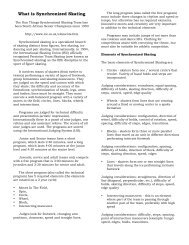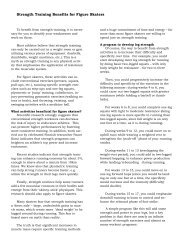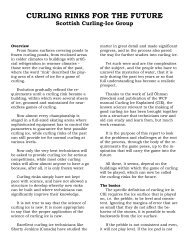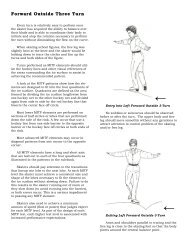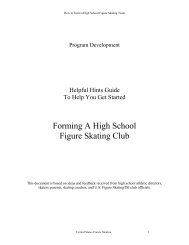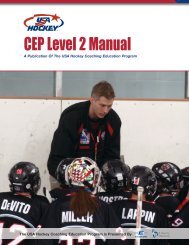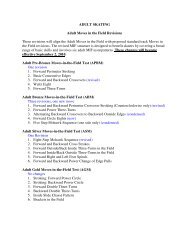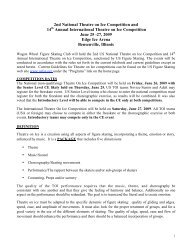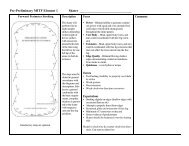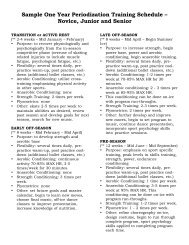CEP Level 3 Manual - Rushmore Hockey Association
CEP Level 3 Manual - Rushmore Hockey Association
CEP Level 3 Manual - Rushmore Hockey Association
Create successful ePaper yourself
Turn your PDF publications into a flip-book with our unique Google optimized e-Paper software.
T A B L E O F C O N T E N T SChapter 22Body CheckingOBJECTIVES• Describe the principles of body checking• Outline the types of body checks• Teach the players how to protect themselves when checkedBODY CHECKING<strong>Hockey</strong> is a contact sport. It is thereforeimportant for coaches to teach their players to bodycheck properly and within the rules (insist on sticksand elbows down).Body checking requires concentration, agilityand anticipation. The checker must concentrate onthe puck carrier, not the puck. The checker mustkeep both hands on the stick, with the blade on ornear the ice, using timing and angling to limit thepuck carrier’s space. The checker must avoidlunging at the puck carrier, placing his glove in theface of the puck carrier, or making excessive contactwith the stick. All of these infractions must bediscouraged or they will result in penalties duringgames.When being checked, a player should try tocushion the collision with the board or glass withthe arms.It is a good idea to teach your players that whenthey know they are about to be body checked, theyshould reach out and place a hand on the playerchecking them. This often will cushion the blow andsometimes will allow the player to slip off the check.The player being checked should establish a wide,solid base. They should then lean into the check.The three types of body checking that youshould teach are:• shoulder check• hip check• checking along the boardsWhile the techniques vary somewhat, there arefactors common to all.1. The appropriate time for checking is beforeor as the offensive player is releasing a passor shot.2. Straight-on checking is difficult. It is better toget an angle or take advantage of a limitedarea: (i.e., an offensive player trying to gobetween a defensive player and the boards).3. The checker’s speed must be under controland the knees should be bent.4. The checker must keep his/her eyes on thetarget – usually somewhere between thechest and waist.When teaching body checking, you shouldemphasize to your players that the purpose of theDefensive Team Tactics | 263



